
How to Use DPDT Switch: Examples, Pinouts, and Specs
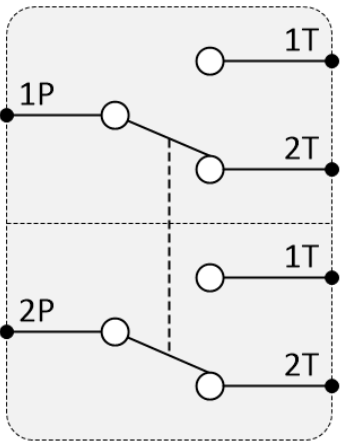
 Design with DPDT Switch in Cirkit Designer
Design with DPDT Switch in Cirkit DesignerIntroduction
A Double Pole Double Throw (DPDT) switch is an electrical switch designed to control two separate circuits simultaneously. It features two input terminals and four output terminals, allowing each input to connect to one of two outputs. This configuration enables versatile control, such as reversing motor direction, switching between power sources, or toggling between two devices.
Explore Projects Built with DPDT Switch
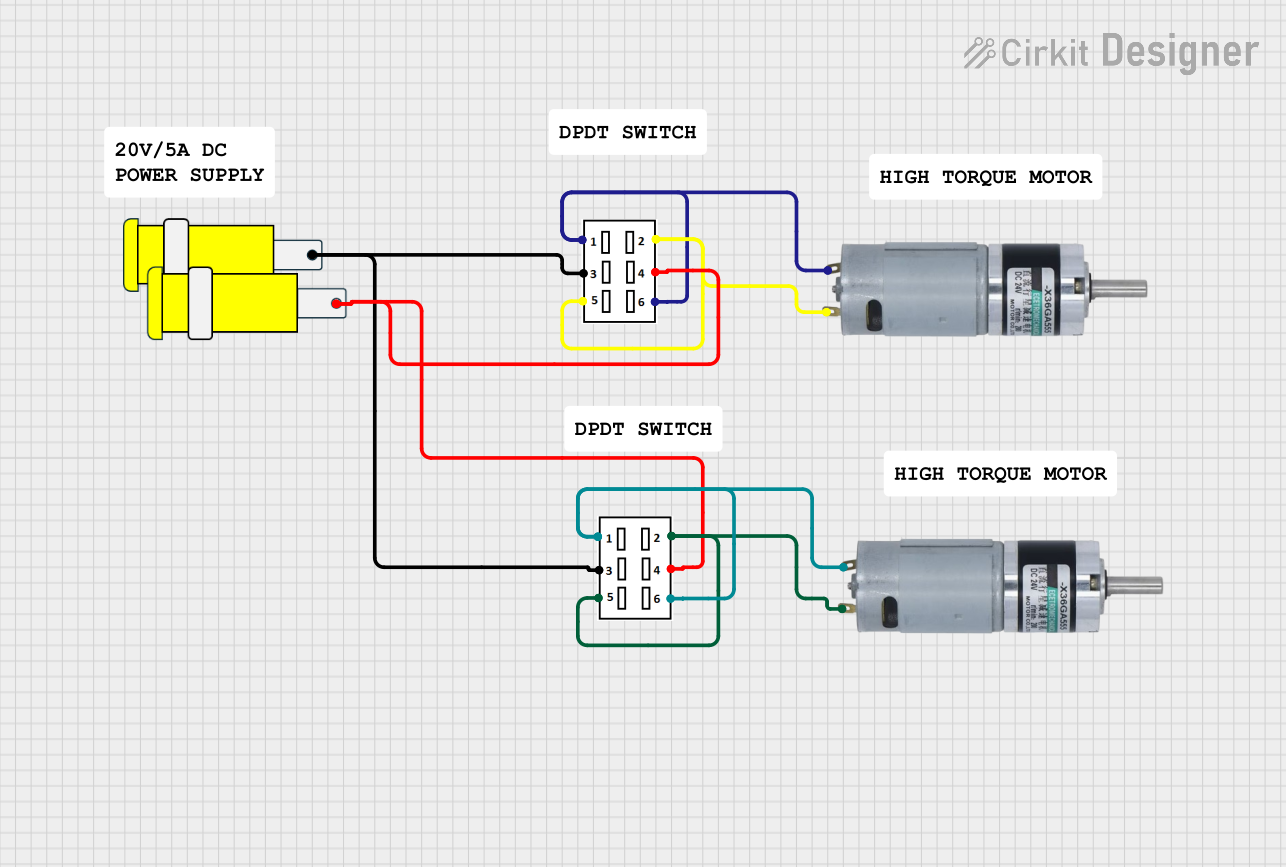
 Open Project in Cirkit Designer
Open Project in Cirkit Designer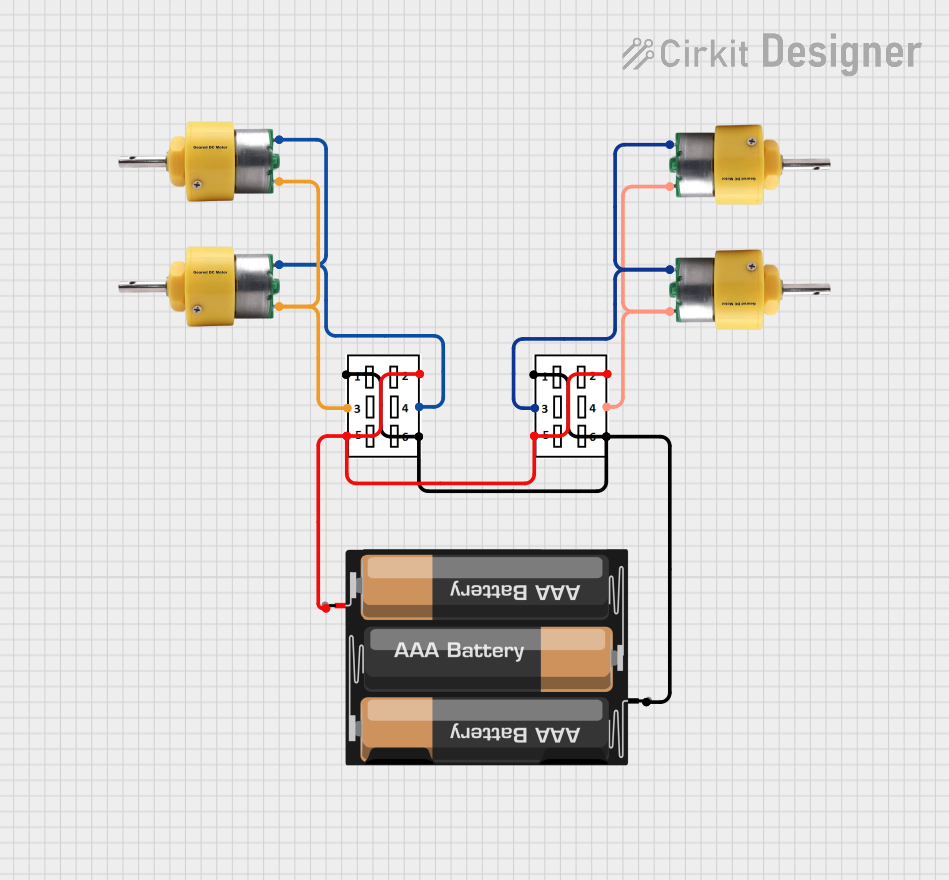
 Open Project in Cirkit Designer
Open Project in Cirkit Designer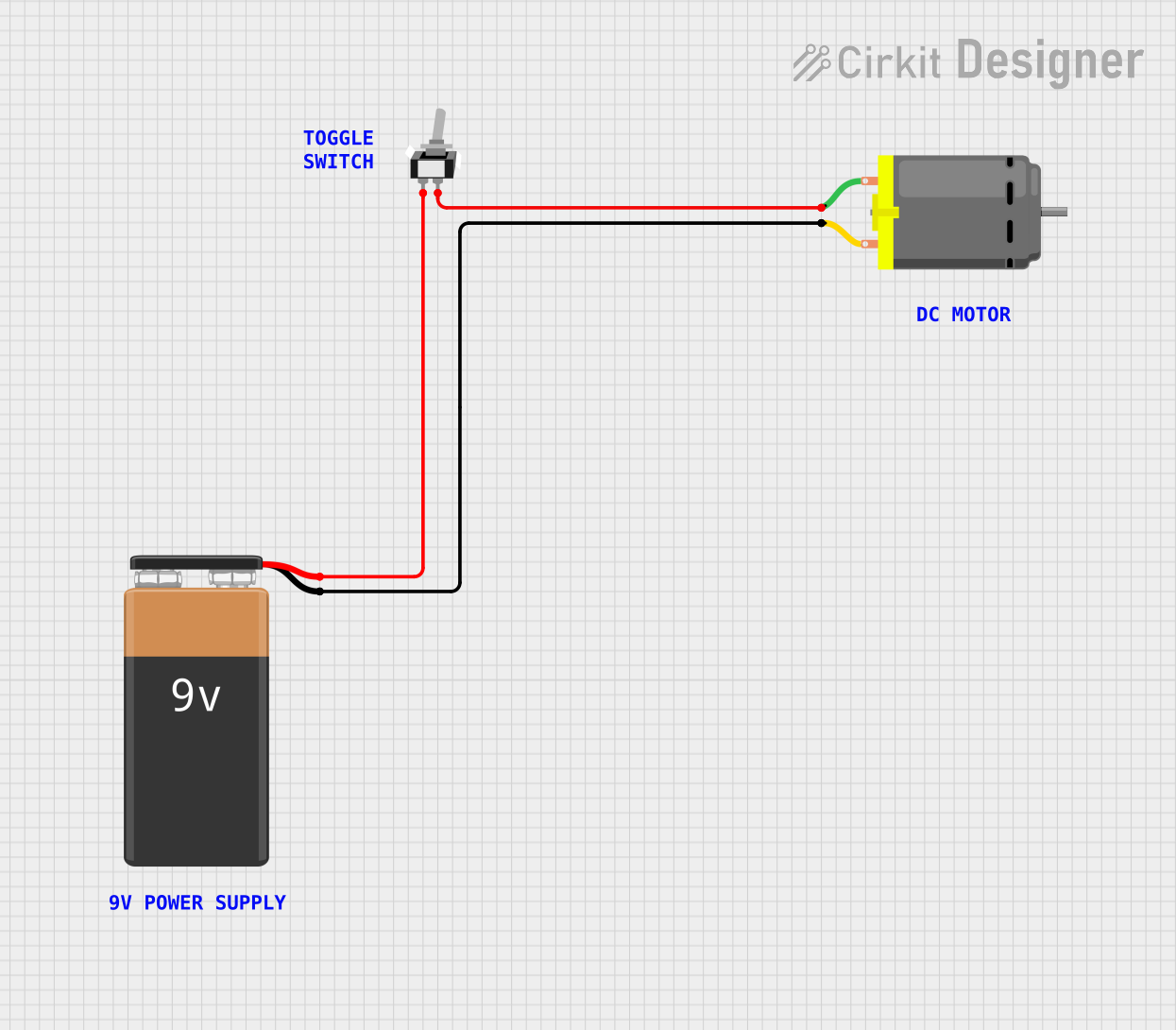
 Open Project in Cirkit Designer
Open Project in Cirkit Designer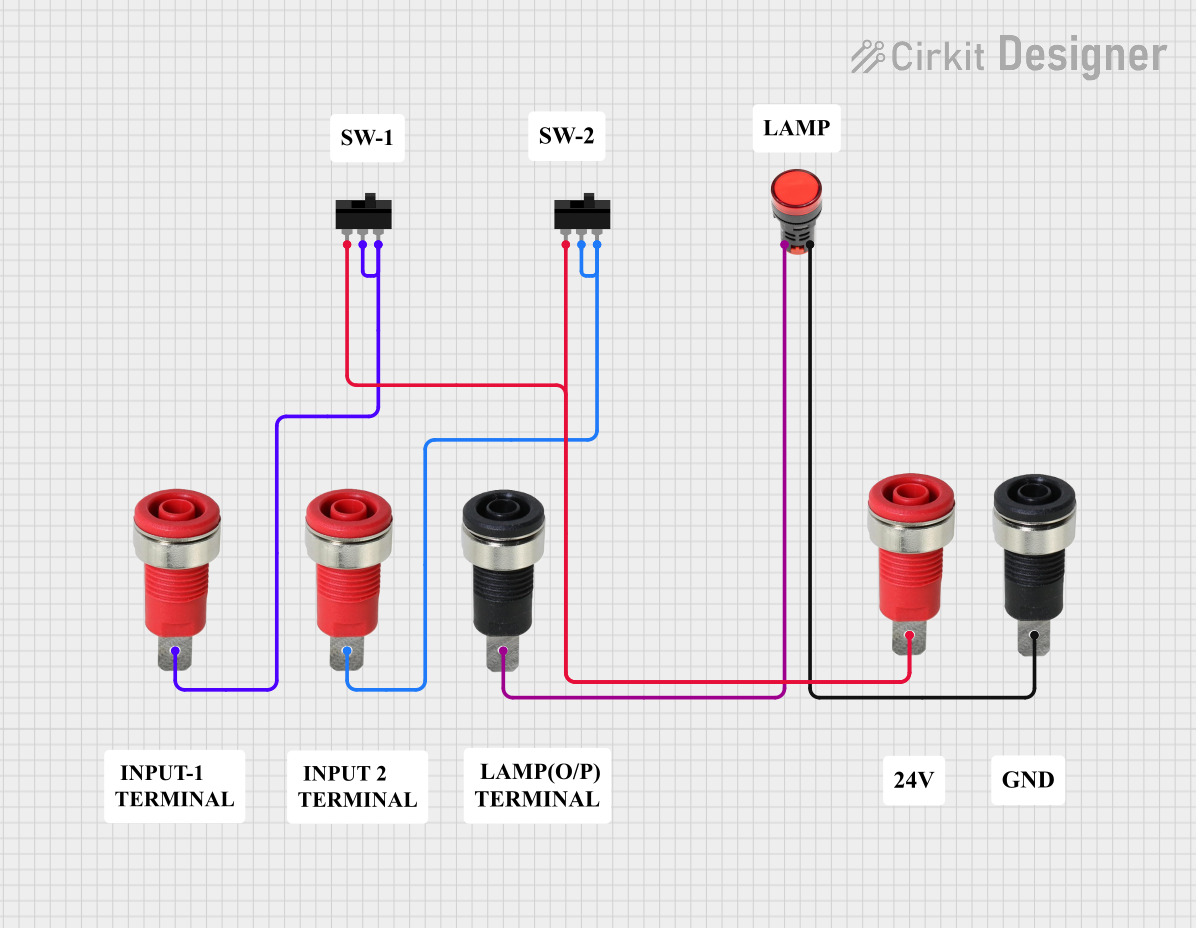
 Open Project in Cirkit Designer
Open Project in Cirkit DesignerExplore Projects Built with DPDT Switch

 Open Project in Cirkit Designer
Open Project in Cirkit Designer
 Open Project in Cirkit Designer
Open Project in Cirkit Designer
 Open Project in Cirkit Designer
Open Project in Cirkit Designer
 Open Project in Cirkit Designer
Open Project in Cirkit DesignerCommon Applications and Use Cases
- Reversing the polarity of DC motors for direction control
- Switching between two power sources (e.g., battery and mains)
- Audio signal routing in amplifiers or mixers
- Controlling two independent circuits with a single switch
- Used in robotics, industrial automation, and DIY electronics projects
Technical Specifications
Below are the general technical specifications for a DPDT switch. Note that specific values may vary depending on the manufacturer and model.
| Parameter | Value |
|---|---|
| Switch Type | Double Pole Double Throw (DPDT) |
| Number of Poles | 2 |
| Number of Throws | 2 |
| Voltage Rating | Typically 12V to 250V (AC/DC) |
| Current Rating | Typically 1A to 15A |
| Contact Resistance | ≤ 50 mΩ |
| Insulation Resistance | ≥ 100 MΩ |
| Mechanical Life | 10,000 to 50,000 operations |
| Mounting Type | Panel mount or PCB mount |
Pin Configuration and Descriptions
The DPDT switch has six terminals, as shown in the table below:
| Pin Number | Description |
|---|---|
| 1 | Input terminal for Pole 1 |
| 2 | Output terminal 1 for Pole 1 |
| 3 | Output terminal 2 for Pole 1 |
| 4 | Input terminal for Pole 2 |
| 5 | Output terminal 1 for Pole 2 |
| 6 | Output terminal 2 for Pole 2 |
The switch toggles between two states:
- State 1: Input 1 connects to Output 1, and Input 2 connects to Output 1.
- State 2: Input 1 connects to Output 2, and Input 2 connects to Output 2.
Usage Instructions
How to Use the DPDT Switch in a Circuit
- Identify the Terminals: Refer to the pin configuration table to identify the input and output terminals.
- Connect the Inputs: Connect the two input terminals (Pins 1 and 4) to the power source or signal source.
- Connect the Outputs: Connect the output terminals (Pins 2, 3, 5, and 6) to the desired loads or circuits.
- Toggle the Switch: Flip the switch to change the connection state, directing the inputs to the desired outputs.
Example: Reversing a DC Motor
A DPDT switch can reverse the polarity of a DC motor, allowing it to spin in both directions. Below is a wiring diagram and Arduino code example for controlling a DPDT switch with an Arduino UNO.
Wiring Diagram
- Connect Pins 1 and 4 to the positive and negative terminals of the power supply.
- Connect Pins 2 and 5 to one terminal of the motor.
- Connect Pins 3 and 6 to the other terminal of the motor.
- Optionally, use an Arduino to control the switch via relays.
Arduino Code Example
// Example code to control a DPDT switch using an Arduino UNO
// This code assumes the DPDT switch is controlled via two relays
// connected to digital pins 8 and 9 on the Arduino.
const int relay1Pin = 8; // Relay 1 controls one side of the DPDT switch
const int relay2Pin = 9; // Relay 2 controls the other side of the DPDT switch
void setup() {
pinMode(relay1Pin, OUTPUT); // Set relay1Pin as an output
pinMode(relay2Pin, OUTPUT); // Set relay2Pin as an output
// Initialize both relays to OFF
digitalWrite(relay1Pin, LOW);
digitalWrite(relay2Pin, LOW);
}
void loop() {
// Forward direction
digitalWrite(relay1Pin, HIGH); // Activate relay 1
digitalWrite(relay2Pin, LOW); // Deactivate relay 2
delay(5000); // Run motor forward for 5 seconds
// Reverse direction
digitalWrite(relay1Pin, LOW); // Deactivate relay 1
digitalWrite(relay2Pin, HIGH); // Activate relay 2
delay(5000); // Run motor in reverse for 5 seconds
}
Important Considerations and Best Practices
- Voltage and Current Ratings: Ensure the switch can handle the voltage and current of your circuit.
- Debouncing: Mechanical switches may produce noise or "bouncing" when toggled. Use capacitors or software debouncing techniques if necessary.
- Mounting: Securely mount the switch to prevent accidental toggling or damage.
- Safety: When working with high voltages, ensure proper insulation and follow safety guidelines.
Troubleshooting and FAQs
Common Issues
Switch Does Not Toggle Properly
- Cause: Mechanical wear or debris inside the switch.
- Solution: Clean the switch contacts or replace the switch if necessary.
No Output Connection
- Cause: Incorrect wiring or loose connections.
- Solution: Double-check the wiring against the pin configuration table.
Overheating
- Cause: Exceeding the current or voltage rating.
- Solution: Use a switch with appropriate ratings for your application.
Motor Does Not Reverse
- Cause: Incorrect wiring of the DPDT switch.
- Solution: Verify the connections to the motor and power supply.
FAQs
Q: Can I use a DPDT switch to control AC circuits?
A: Yes, as long as the switch is rated for the voltage and current of the AC circuit.
Q: How do I debounce a DPDT switch?
A: You can use a capacitor across the switch terminals or implement software debouncing if the switch is connected to a microcontroller.
Q: Can I use a DPDT switch for audio applications?
A: Yes, DPDT switches are commonly used for routing audio signals in mixers and amplifiers.
Q: What is the difference between DPDT and SPDT switches?
A: A DPDT switch controls two circuits simultaneously, while an SPDT (Single Pole Double Throw) switch controls only one circuit.